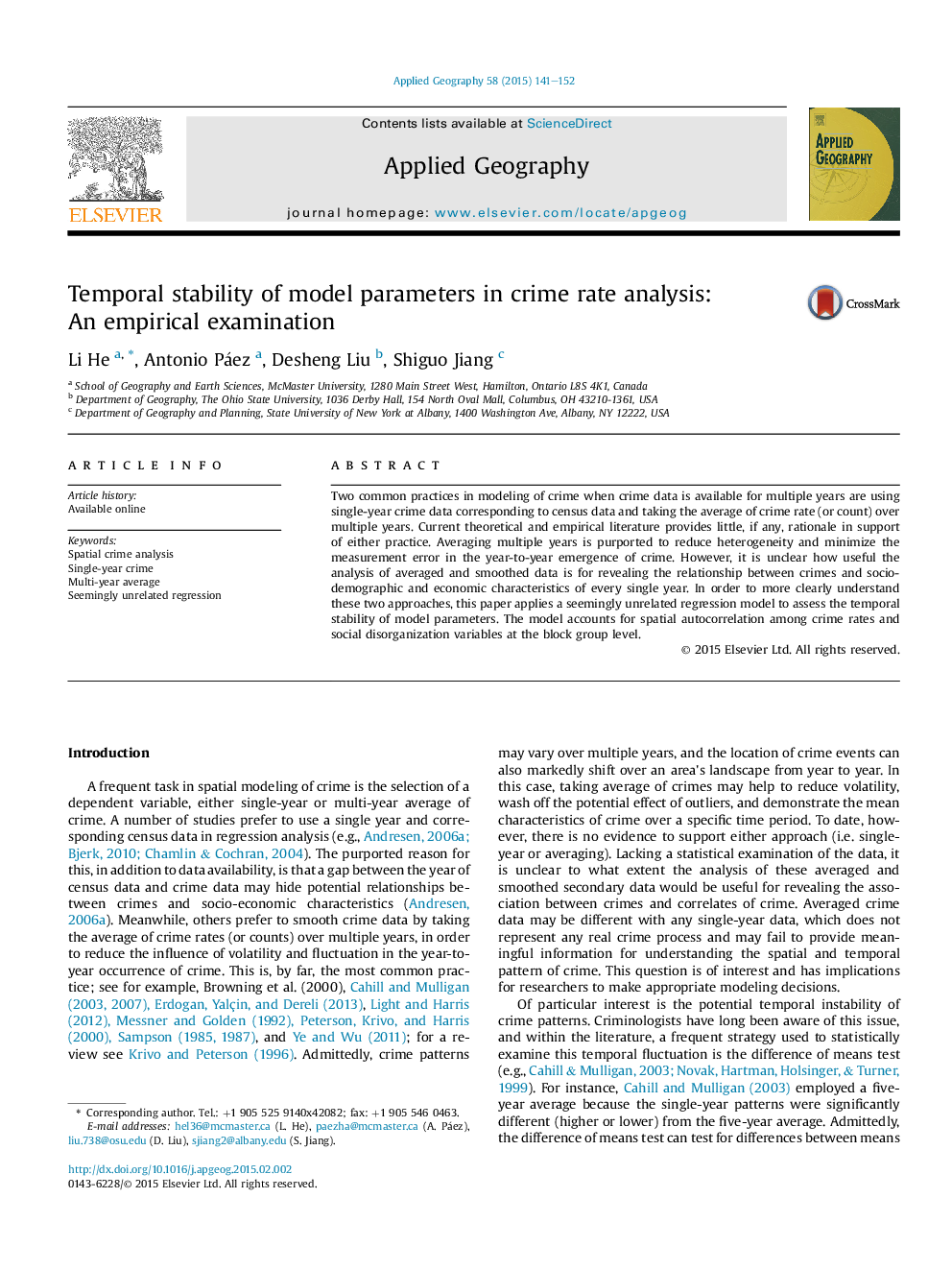| Article ID | Journal | Published Year | Pages | File Type |
|---|---|---|---|---|
| 6538600 | Applied Geography | 2015 | 12 Pages |
Abstract
Two common practices in modeling of crime when crime data is available for multiple years are using single-year crime data corresponding to census data and taking the average of crime rate (or count) over multiple years. Current theoretical and empirical literature provides little, if any, rationale in support of either practice. Averaging multiple years is purported to reduce heterogeneity and minimize the measurement error in the year-to-year emergence of crime. However, it is unclear how useful the analysis of averaged and smoothed data is for revealing the relationship between crimes and socio-demographic and economic characteristics of every single year. In order to more clearly understand these two approaches, this paper applies a seemingly unrelated regression model to assess the temporal stability of model parameters. The model accounts for spatial autocorrelation among crime rates and social disorganization variables at the block group level.
Keywords
Related Topics
Life Sciences
Agricultural and Biological Sciences
Forestry
Authors
Li He, Antonio Páez, Desheng Liu, Shiguo Jiang,
